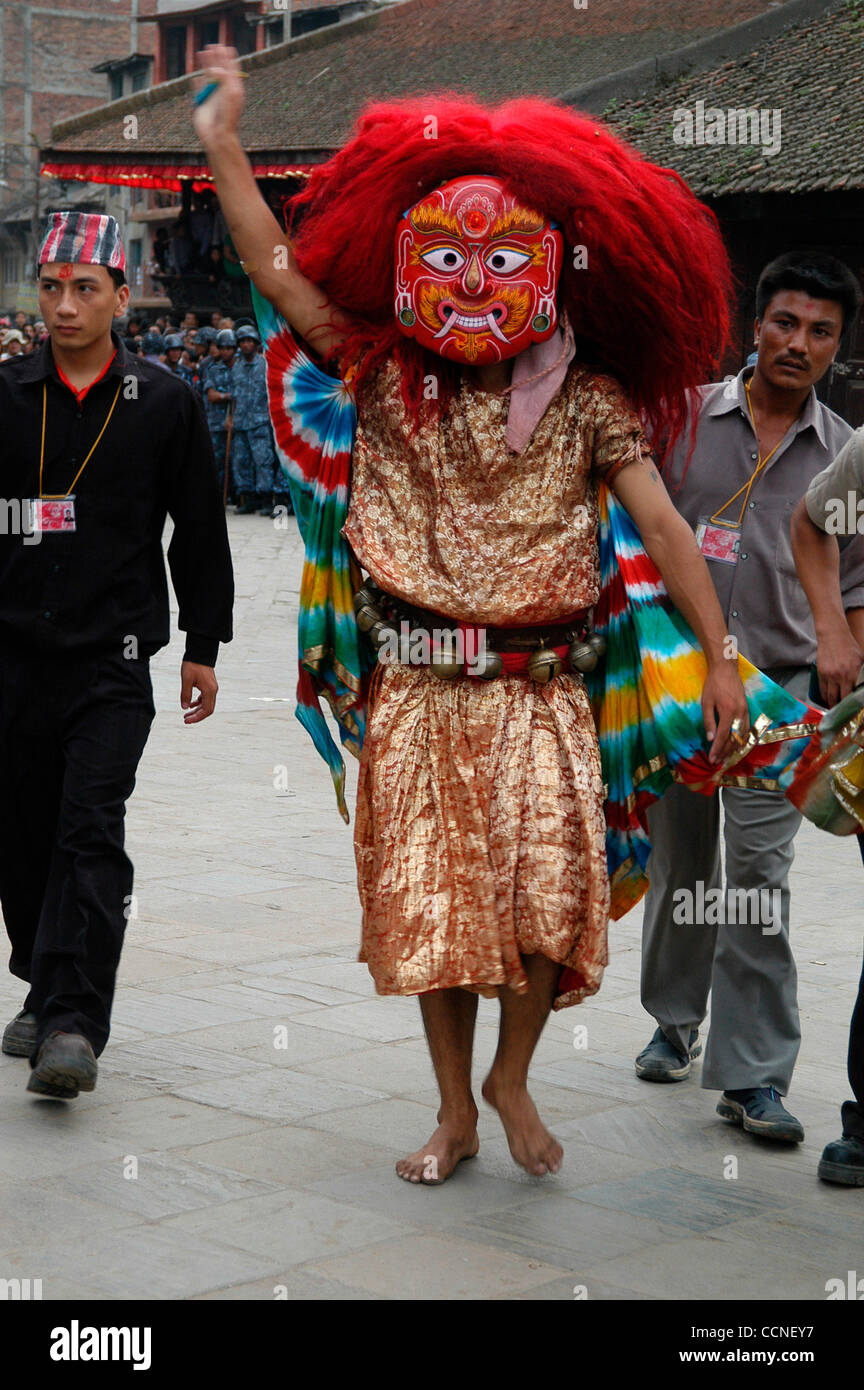Oct 03, 2004; Basantapur Durbar Square, Kathmandu , NEPAL; Living Goddess Kumari Festival: The Indra (God of Rain) festival, heralds the beginning of the Lakhe (Mask) dance. According to tradition, Lakhe is a demon who, as penance for his wicked ways as an ordinary man is charged with fighting other

Image details
Contributor:
ZUMA Press, Inc. / Alamy Stock PhotoImage ID:
CCNEY7File size:
17.2 MB (998.2 KB Compressed download)Releases:
Model - no | Property - noDo I need a release?Dimensions:
2000 x 3008 px | 16.9 x 25.5 cm | 6.7 x 10 inches | 300dpiDate taken:
3 October 2004Photographer:
ZUMAMore information:
This image could have imperfections as it’s either historical or reportage.
Oct 03, 2004; Basantapur Durbar Square, Kathmandu , NEPAL; Living Goddess Kumari Festival: The Indra (God of Rain) festival, heralds the beginning of the Lakhe (Mask) dance. According to tradition, Lakhe is a demon who, as penance for his wicked ways as an ordinary man is charged with fighting other demons and keeping them away from Kathmandu. He is worshipped by the people of Kathmandu to thank him for his work of keeping malevolent demons away and to ensure that he stays vigilant for the year to come. The demon, with a heavy red mask and ornaments adorning his body, dances about the streets of the city, followed by crowds of people. In older times, He was joined by other dancers called bhaku who engaged with him in a bloodthirsty tradition of pursuing an inebriated black buffalo through the city, slashing it as they went along. While this practiced was discontinued in 1940, the bhaku still join Lakhe in his dance.